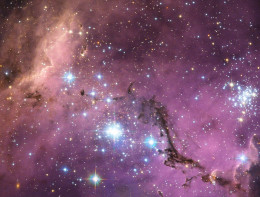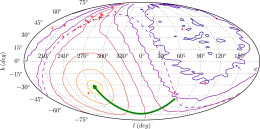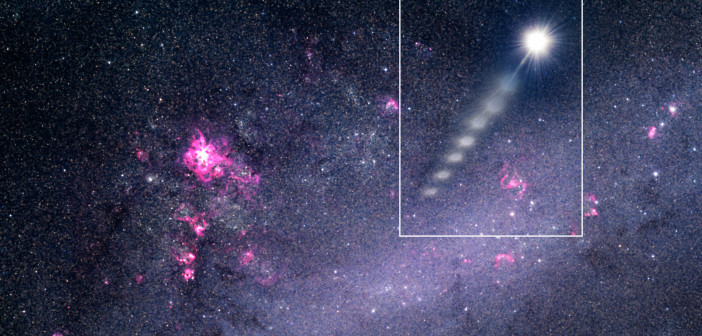How are the hypervelocity stars we’ve observed in our galaxy produced? A recent study suggests that these escapees could be accelerated by a massive black hole in the center of the Large Magellanic Cloud.
A Black Hole Slingshot
Since their discovery in 2005, we’ve observed dozens of candidate “hypervelocity stars” — stars whose velocity in the rest frame of our galaxy exceeds the local escape velocity of the Milky Way. These stars present a huge puzzle: how did they attain these enormous velocities?
One potential explanation is known as the Hills mechanism. In this process, a stellar binary is disrupted by a close encounter with a massive black hole (like those thought to reside at the center of every galaxy). One member of the binary is flung out of the system as a result of the close encounter, potentially reaching very large velocities.

A star-forming region known as LHA 120-N 11, located within the LMC. Some binary star systems within the LMC might experience close encounters with a possible massive black hole at the LMC’s center. [ESA/NASA/Hubble]
Blame the LMC?
Usually, discussions of the Hills mechanism assume that Sagittarius A*, the supermassive black hole at the center of the Milky Way, is the object guilty of accelerating the hypervelocity stars we’ve observed. But what if the culprit isn’t Sgr A*, but a massive black hole at the center of the Large Magellanic Cloud (LMC), one of the Milky Way’s satellite galaxies?
Though we don’t yet have evidence of a massive black hole at the center of the LMC, the dwarf galaxy is large enough to potentially host one as large as 100,000 solar masses. Assuming that it does, two scientists at the University of Cambridge, Douglas Boubert and Wyn Evans, have now modeled how this black hole might tear apart binary star systems and fling hypervelocity stars around the Milky Way.
Models for Acceleration
Boubert and Evans determined that the LMC’s hypothetical black hole could easily eject stars at ~100 km/s, which is the escape velocity of the LMC. When this speed is combined with the orbital velocity of the LMC itself (another ~380 km/s relative to the Milky Way), this could result in hypervelocity stars moving faster than the escape speed of the Milky Way, as observed.

Predicted distribution of hypervelocity stars ejected from the LMC, in galactic coordinates. The red crosses show locations of detected hypervelocity stars, and the green arrow marks the path of the LMC over the last 350 million years. [Boubert & Evans 2016]
How can we test this model for the production of hypervelocity stars? The authors’ model predicts the presence of a significant number of hypervelocity stars near the LMC in the southern hemisphere, a region which has been poorly surveyed before now. Surveys such as SkyMapper and Gaia, however, will observe this region — and their discoveries (or lack thereof) should provide a useful test of whether hypervelocity stars are accelerated by the LMC.
Citation
Douglas Boubert and N. Wyn Evans 2016 ApJ 825 L6. doi:10.3847/2041-8205/825/1/L6


1 Comment
Pingback: The LMC and a 100,000 Msun BH make hypervelocity stars?